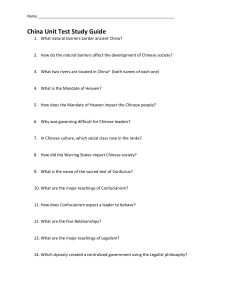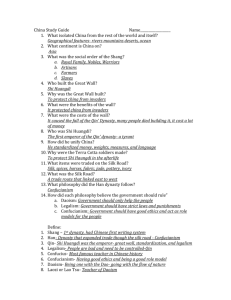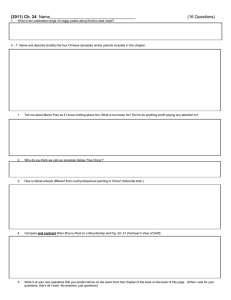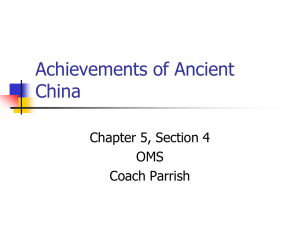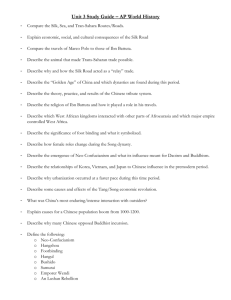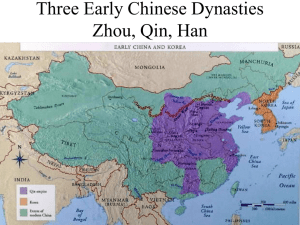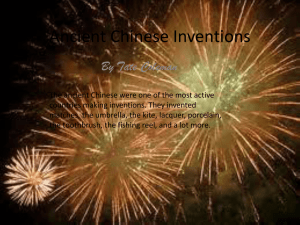Chinese Empires, Confucianism, Taoism
advertisement
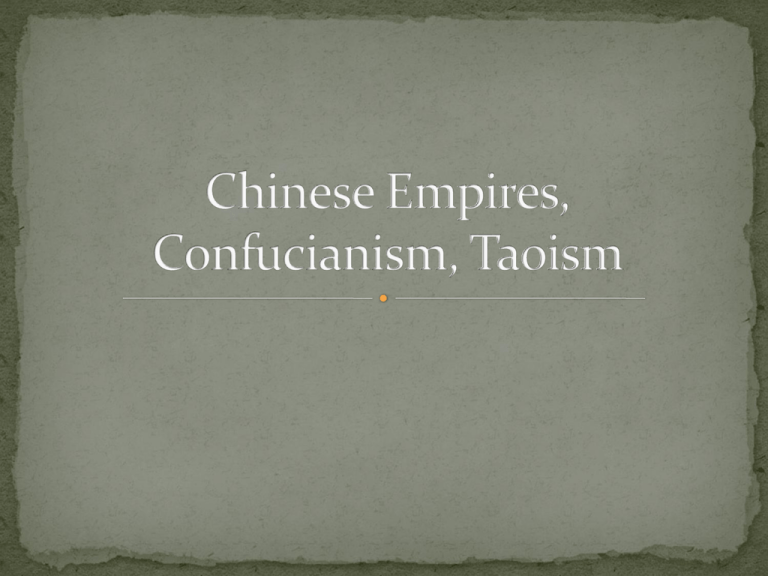
• After almost 800 years in power, the Zhou declined. • As they declined, China broke into many smaller countries governed by warlords. • The last few hundred years of the Zhou was characterized by turmoil during the Warring States Period. • Born in 551 BC • Lived during the turmoil of the Warring States Period. • Believed that society could be ordered if rulers and subjects adhered to five basic relationships. For example: • Ruler (be just and wise)- subject (be loyal and obedient) • Father-children • Husband-Wife Generally, he taught: • Filial Piety (Respect for elders, parents) • Politeness • Education NOT a religion A code of ethics of how to live and how to govern Ruler should practice kindness and wisdom, subjects should be loyal and law abiding Lays foundation for Chinese bureaucracy. Government workers must be educated in Confucianism and good governance. http://www.youtube.com/watch?v=QlgLvENYJsk • Laozi taught that natural rhythms are important • Things in nature follow “the Dao” or “the Way.” • They do not seek glory or to stand out, they are in harmony with it • Taoism influenced China by emphasizing nature in art and science • Circle represents unity of earth and heaven • Light side is yin (earth, feminine, passive) • Dark side is yang (heaven, masculine, active) • Daoist (Taoist ) symbol Shi Huangdi builds Qin Dynasty- China’s first Emperor He centralizes government Forced labor High taxes Oppressive- based on legalism, emphasis on law and order Built Great Wall Only lasted 15 years http://www.youtube.com/watch?v=srFhXDZhUZI • Built to keep nomadic invaders from the North and West out of China • Expanded to current size in 1500’s AD After the Qin Dynasty fell, China erupted into civil war The Han emerged as the most powerful dynasty and expanded the empire Buddhism becomes a big deal in China at this time Instituted civil service exams based on Confucianism Highly organized Bureaucracy (Mandarin) This civil service system was used until 1911! http://www.youtube.com/watch?v=z3qIXQCHf94 The Chinese invented the first paper Porcelain is a ceramic material made from clay and fired at a very high temperature. This makes porcelain very strong and usually glassy in appearance. Porcelain is often called “China.” Waterclocks Compass Gunpowder Silk is made from the silk worm. It was an incredibly labor intensive process. But, it is strong, lightweight, and beautiful. People all over the world traded for Chinese silk fabrics So important for export that the trade route that connects China to the Mediterranean is called the Silk Road

